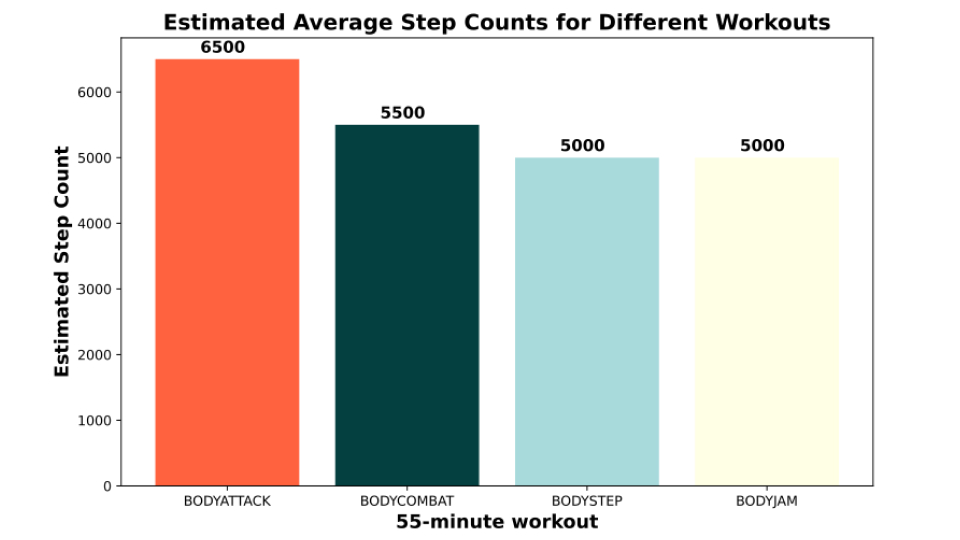Read on to discover:
- The link between your daily step count and the risk of 13 different types of cancer
- The step count sweet spot (it’s not as high as you think!)
- Speed vs distance: what has the most significant impact
- How other physical activities can contribute to your step count – and why the step count of popular workouts brings a welcome boost
Walking brings a slew of health benefits, and hitting 10,000 steps a day has long been lauded as the cornerstone of a healthy lifestyle. But if you’re struggling to stack up your step count, don’t be deterred. There’s mounting evidence to suggest a less lofty number will still deliver remarkable perks. And, as the newest findings show, reduced cancer risk is one of the most significant.

Scientists in the UK have spent over six years studying the activity and health metrics of 85,000 people wearing activity trackers. They found the more steps you take each day, the lower your chances of developing up to 13 different types of cancer (including breast, colon, lung, liver, kidney, bladder, rectal, endometrial, esophageal, gastric, myeloid leukemia, myeloma, plus head and neck cancers.)
7,000 steps per day was linked to an 11% lower risk of developing cancer. At 9,000 steps, the risk dropped by 16%.
Like earlier research that highlights how heart health benefits kick in when you do 5,000 daily steps, the cancer-curbing benefits are also sparked at the 5,000 step mark. Ramping it up to 7,000 steps per day was linked to an 11% lower risk of developing cancer. At 9,000 steps, the risk dropped 16%.
The significant reduction in cancer risk remained when adjustments for BMI, smoking and other lifestyle factors were made – highlighting that the effect can confidently be pinned on physical activity.

How many steps are enough?
Sure, 10,000 is the default daily step goal for most smart devices. However, there’s currently scant evidence to show whether 10,000 is indeed the gold standard.
The best bet is to find your own sweet spot, keeping these points in mind:
Try and make 5,000 steps a day the minimum. Studies show that those who take more than 5,000 steps a day have a much lower risk of heart disease and stroke than those who take less.
If you can bump up your step count a little further, be bold and go for it. According to a 2021 study that tracked the steps of 2,110 middle-aged adults over 11 years, clocking in at around 7,000 steps a day could be ideal for optimal health benefits. Taking that many steps reduced participants’ chances of premature death by 50 to 70%. Interestingly, striding beyond 7,000 steps saw health benefits plateau.
Of course, if tackling 10,000 steps a day feels like a walk in the park, then keep at it. There’s no doubt that every step leads towards improved health.
DID YOU KNOW:
The 10,000 step myth
Why 10,000 steps? Is it because it’s a neat number that has a tidy ring to it? Well yes, kind of... Its origins trace back 70-odd years to a Japanese marketing campaign for the first commercial pedometer ‘Manpo-kei’ – translated in English as the 10,000 step meter. But it wasn’t based on research or health recommendations, it was rather because it sounded nice. Some have even suggested that 10k led the way because the Japanese symbol for 10,000 looks like a person walking – although we’re not sure we see it either!

Speed versus step count
The most recent study found faster walking was initially associated with lower cancer risk, yet the total number of steps is more important than how fast you move.
Amanda Paluch, who led an analysis of 15 studies exploring the steps of 47,471 adults, says the most important thing is to set a pace you enjoy. “Whether power walking or [taking] a more leisurely stroll – both are beneficial for our health. Complete your walk however you most enjoy doing it – even break it up into several shorter bouts throughout the day to keep you coming back to do it again the next day.”
So tread lightly if you wish, or march with purpose for miles on end. If you’re putting your best foot forward, missed steps aren’t a misstep for all the health benefits you need.
Alternatives to walking
Walking and running are not the only way forward. Replacing sitting time with any movement will help you reduce the risks of inactivity. Workouts like BODYATTACK™, BODYCOMBAT™ and BODYSTEP™ are a great way to accumulate a large portion of your daily step goal – while also improving your fitness, athleticism and strength.


Find a LES MILLS class near you, or do a LES MILLS workout at home using LES MILLS+.









